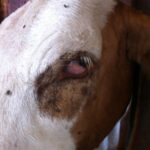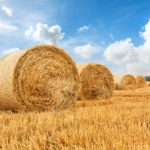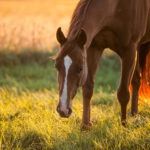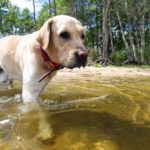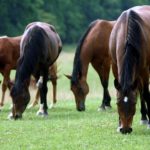It's hot and getting hotter. Extreme temperatures will affect the condition of samples if not shipped properly. This may lead to delays in results if samples arrive at TVMDL in an untestable condition. TVMDL encourages clients to beat the heat … [Read more...] about Shipping samples during a Texas summer
summer
Pinkeye in cattle
Pinkeye in cattle is also known as Infectious Bovine Keratoconjuctivitis (IBK). The longer name accurately describes the fact that the conjunctivae and cornea of the eye are the tissues most often affected by this condition. Signs displayed by … [Read more...] about Pinkeye in cattle
Reminder: TVMDL no longer accepts hay and forage samples for nitrate and cyanide testing
As Texas hits the middle of summer, many animal owners may be interested in testing for nitrates or cyanide. The Texas A&M Veterinary Medical Diagnostic Laboratory (TVMDL) accepts biological samples such as ocular fluid, serum, or urine for … [Read more...] about Reminder: TVMDL no longer accepts hay and forage samples for nitrate and cyanide testing
West Nile virus: Diagnostic Guidance for Veterinarians
Late summer is when the West Nile virus (WNV) poses the greatest threat to the health of horses in the United States. It’s important for veterinarians to educate horse owners concerning the prevention, detection and accurate diagnose of WNV. Yearly, … [Read more...] about West Nile virus: Diagnostic Guidance for Veterinarians
Cyanobacteria: No winter break this year
Cyanobacteria: No winter break this year By Cat Barr, PhD, DABT Blue-green algae (cyanobacteria) have barely taken a break this winter. The Texas A&M Veterinary Medical Diagnostic Laboratory (TVMDL) has already had several positive samples … [Read more...] about Cyanobacteria: No winter break this year
Diagnostic guidance: Cantharidin poisoning in horses
When horses ingest the cantharidin toxin through hay or alfalfa contaminated with “blister” beetles, the outcome is often fatal. Toxicosis occurs rapidly; as little as four grams of dried beetles may contain fatal levels of … [Read more...] about Diagnostic guidance: Cantharidin poisoning in horses

